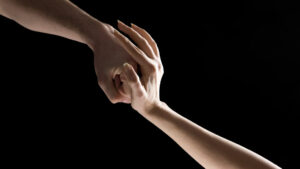Reading visual art: 128 Donkey

Most of the equines in paintings are horses, but a few are those beasts of burden, donkeys, mules or asses. Without getting too deep into distinctions between them, here are some examples of donkeys at work mainly in narrative paintings.
Ker-Xavier Roussel (1867–1944), Old Silenus on a Donkey (1925-27), pastel on paper on canvas, dimensions not known, Musée d’Orsay, Paris. Wikimedia Commons.
Perhaps the most popular myth involving a donkey is that of Bacchus’ drinking buddy Silenus, shown in Ker-Xavier Roussel’s wonderful pastel painting of Old Silenus on a Donkey, from 1925-27. Silenus was the King of Nysa, a companion, tutor and drinking partner to Bacchus, who like the god was often seen drunk. When unable to walk or stand, he was usually seen astride a donkey, as in this superb harvest-time scene.
John Linnell (1792–1882), The Prophet Balaam and the Angel (1859), oil on paper, laid down on canvas, 49.2 x 71.1 cm, Museum of Fine Arts, Houston, TX. Wikimedia Commons.
The Prophet Balaam and the Angel (1859) shows one of the more obscure stories from the Old Testament book of Numbers, revisited briefly in Revelation. Balaam was a non-Israelite who declared himself a prophet. Although he wouldn’t curse the Israelites, the Biblical account claims that he went to King Balak of Moab and explained to him how he could get the Israelites to fall into sin by enticing them with prostitutes and unclean food.
When he had set out to go and curse the Israelites, an angel appeared, first to the donkey that he was riding, and then to Balaam too. The angel told him that the donkey was the only reason that he hadn’t been killed. Balaam then repented, but the angel told him to continue. That is the scene shown in Linnel’s painting, as Balaam (who at this stage cannot see the angel) beats his donkey to move on, but the angel won’t allow the donkey to pass.
Donkeys play roles in several less obscure episodes in the New Testament.
Fra Bartolomeo (1472–1517), The Rest on The Flight into Egypt (c 1500), tempera and oil on canvas, 135 x 114 cm, Palazzo Vescovile, Pienza, Italy. Wikimedia Commons.
Bartolomeo’s The Rest on The Flight into Egypt from about 1500 is a traditional composition showing Mary and Joseph during their journey to Egypt with the infant Jesus. The more distant landscape is less detailed, but his donkey and palm trees are delightful.
Gustave Doré (1832–1883), Christ’s Entry into Jerusalem (before 1876), oil on canvas, 98.4 x 131.4 cm, Private collection. Wikimedia Commons.
Later in Christ’s life, he was borne on a donkey when he entered the city of Jerusalem at the start of the Passion, as shown in Gustave Doré’s Christ’s Entry into Jerusalem. This, a preparatory sketch for the final huge version exhibited at the Salon in 1876, shows his brushwork at its loosest and most gestural. This follows the conventional account in the Gospels of Christ entering Jerusalem in triumph as the start (‘Palm Sunday’ from the palm fronds usually involved) of the series of processes leading to his crucifixion. Doré’s finished work was 6 x 10 metres (20 x 33 feet) in size.
Maximilien Luce (1858–1941), The Good Samaritan (1896), oil on canvas, 76.2 × 101.6 cm, Private collection. Wikimedia Commons.
Maximilien Luce’s Good Samaritan from 1896 combines a brilliantly colourful dusk landscape with a classic narrative painting, showing the parable of the Good Samaritan. This features an unusual combination of the contemporary with its thoroughly traditional donkey.
Ferdinand Hodler (1853–1918), The Miller, his Son and the Donkey (c 1888), oil on canvas, dimensions not known, Musée d’art et d’histoire de Genève, Geneva, Switzerland. Wikimedia Commons.
Ferdinand Hodler’s The Miller, his Son and the Donkey from about 1888 is a delightful retelling of this classic fable. A miller and his son set out on a journey with their elderly donkey, and were repeatedly corrected by those passing by for their treatment of the donkey, in particular which of the pair should be riding the animal. At this point in the story, it’s the miller who is being borne by the donkey, and his son who’s driving it. Three women passing by are telling the miller what he should be doing, which is apparently quite different.
Carlos Vásquez Úbeda (1869-1944), Don Quixote (date not known), oil on canvas, 160 x 278 cm, Musée Goya, Castres, France. Image by Tylwyth Eldar, via Wikimedia Commons.
One of the most famous literary donkeys was that ridden by Don Quixote’s squire Sancho Panza. In true chivalric fashion, the knight rode his decrepit charger, Rocinante, and his squire had to make do with the donkey that also had to carry their supplies, clothing and any other baggage. Panza’s donkey is stolen from under him at one stage, but like many donkeys proves a long-suffering companion, unlike Don Quixote.
Donkeys also make appearances in non-narrative paintings of the countryside, where they plod on in their unglamorous roles.
James Ward (1769–1859), The Straw Yard (1810), oil on panel, 19.1 x 29.2 cm, Yale Center for British Art, New Haven, CT. Wikimedia Commons.
The Straw Yard (1810) is a wonderfully loose sketch in which James Ward brings together the dereliction of the countryside with a menagerie of farm animals, including horses, two donkeys, chickens, and an abundance of pigs and piglets.
Constant Troyon (1810–1865), On the Way to Market (1859), oil on canvas, 260.5 x 211 cm, Hermitage Museum, Saint Petersburg. Wikimedia Commons.
Constant Troyon’s On the Way to Market from 1859 is one of the most atmospheric and faithful paintings of the journeys that farmers throughout the world did to sell and buy livestock. The donkey in the foreground has been entrusted with large wicker panniers to carry lambs that are too young to be driven.
William Dyce (1806–1864), Pegwell Bay, Kent – a Recollection of October 5th 1858 (c 1858), oil on canvas, 635 cm x 889 cm, The Tate Gallery, London. Wikimedia Commons.
This is William Dyce’s finely detailed view of Pegwell Bay, Kent, on the coast of south-east England, out of season, at the end of a fine day in early October. Visitors to the beach are wrapped for warmth as well as modesty. In the distance, a group of donkeys are being taken to graze for the night, after the day’s work being hired out for children to ride. This appears to have been a peculiarly British activity for the beach.
My last painting is the most enigmatic use of a donkey that I have come across in art.
William Blake (1757–1827), The Night of Enitharmon’s Joy (formerly called ‘Hecate’) (c 1795), colour print, ink, tempera and watercolour on paper, 43.9 x 58.1 cm, The Tate Gallery (Presented by W. Graham Robertson 1939), London. © The Tate Gallery and Photographic Rights © Tate (2016), CC-BY-NC-ND 3.0 (Unported), http://www.tate.org.uk/art/artworks/blake-the-night-of-enitharmons-joy-formerly-called-hecate-n05056
William Blake’s cryptic watercolour now known as The Night of Enitharmon’s Joy from 1795 was thought to show Hecate, largely on the basis of its three figures. If that were the case, it would be the only such representation in which two of the three figures faced inwards, in contradiction to their symbolic form.
The next most likely candidate is that the woman seen at the front of the figures is from Blake’s own mythology, Enitharmon: partner, twin, and inspiration to Los (and mother of Orc). She symbolises spiritual beauty. In her ‘night of joy’, she establishes her Woman’s World, with a false religion of chastity and vengeance, Blake’s radical view of the 1800 year history of the official Christian church.
She is accompanied by symbols of night, including the owl and bat. She also plays the role of Eve, which may explain the head of a snake peering out towards Enitharmon, although this may be further confounding with Hecate. The donkey eating thistles symbolises Blake’s rejection of the ‘official’ church, and the two figures behind Enitharmon face in and bow their heads in guilt. The book on which Enitharmon’s left hand rests would then be Urizen’s ‘Book of Brass’, in which his repressive laws are laid down.
Near where I live, there’s a busy donkey sanctuary, that still rescues old and abused animals and provides comfort for them in their retirement. After more than five thousand years of serving man, they’re still our beast of burden.



